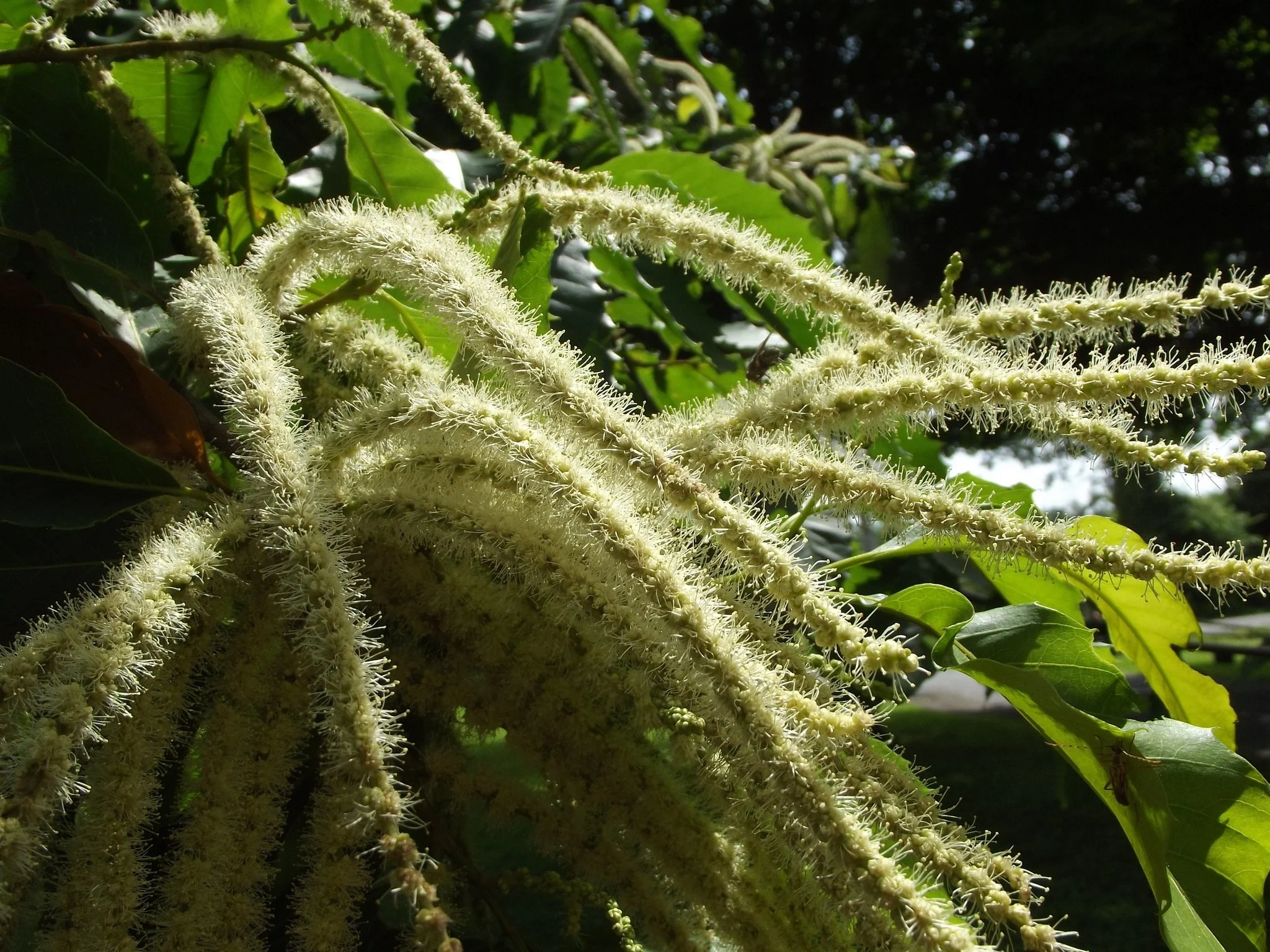Darling 54 and 58 Lines Developed
Catkins
By 2012, ESF scientists developed many different varieties of trees which contained the OxO gene and different mechanisms were used to drive expression of this new gene. Experiments involving infection of stems and leaves of these new varieties showed that blight lesion sizes could be substantially reduced - evidence that the OxO directly improved chestnut tree health.[2][3] The team found that the Darling 54 and 58 lines produced more OxO than others tested previously, and these trees were advanced for further testing.

